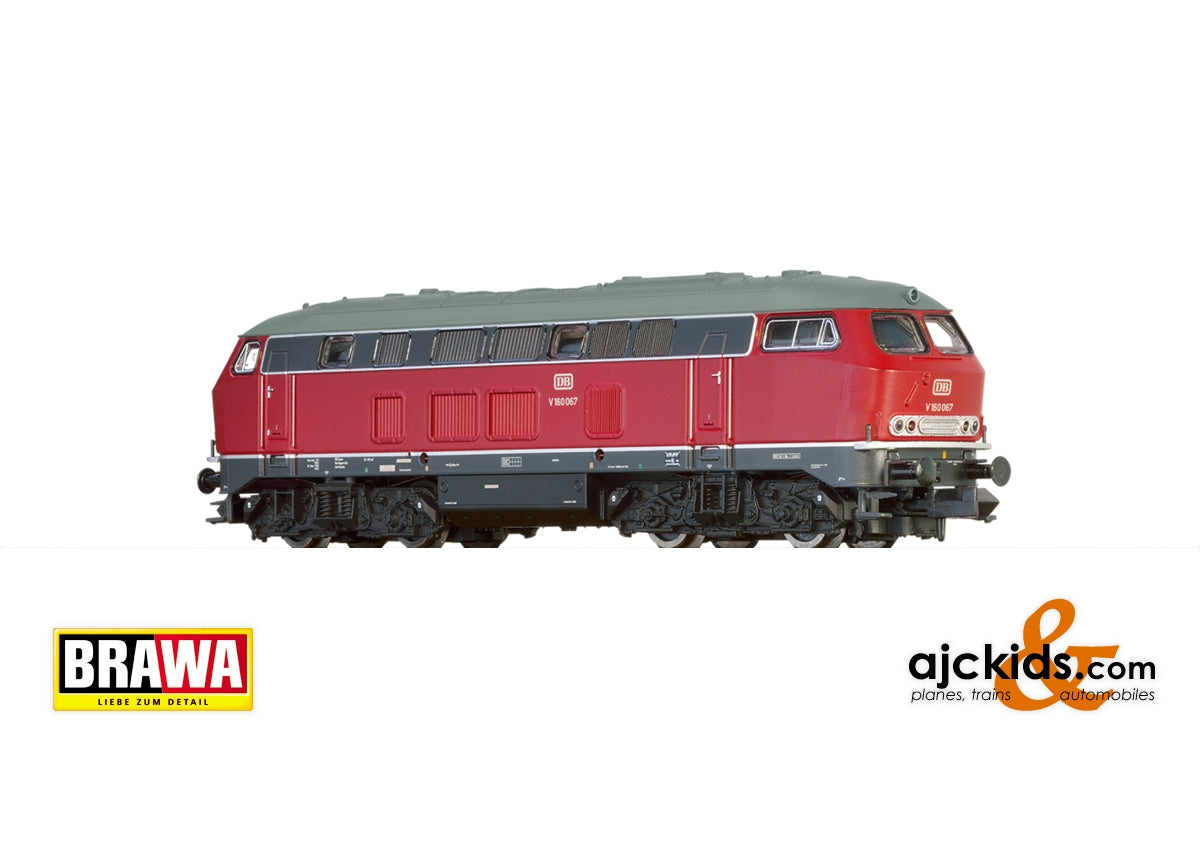Brawa 41158 - Diesel Locomotive V160 DB, III, DC Digital
Diesel Locomotive V160 DB, III, DC Digital
Road no.: V160 067
MODEL DETAILS
- V160 models technically & optically reworked
- LED lighting
- Extra mounted windscreen wiper
- New true to original gearbox
- Improved power consumption
- Etched front steps
- New with NEM-standard short-coupling
- Buffer screed & roof in more detail
- Driver's cab light
- New motor
- PluX22 interface
- D&H sound
INFO ABOUT THE ORIGINAL
Up until the mid-fifties, motor engineering did not make it possible to build a main-line diesel locomotive with only one propulsion system and sufficient power. Consequently, the V200 and V200.1 series were built with two propulsion systems in order to meet their performance requirements. However, the manufacturers worked at full stretch on stronger motors, and by the end of the decade, a power of 1,400 kW from one propulsion system was no longer an illusion. As early as 1956, the Krupp company began to develop a medium-duty main-line diesel locomotive with one motor, a steam heating system, and a Vmax of 120 km/h. In 1960, Krupp and Henschel delivered a total of ten pilot-production machines, nine of which received the nickname “Lollo” due to their exterior, inspired by Gina Lollobrigida. The tenth locomotive already had a prosaic, much more angular shape and could be produced considerably more cheaply and was therefore adopted for the series production. The machines stood the test in goods train service and passenger service and, after extensive testing, they were produced in series from 1964 to 1968. The companies Krupp, Henschel, KHD, Krauss-Maffei, and MaK supplied 214 series locomotives in total. They were used in the entire German federal territory, more and more in goods traffic following the delivery of the BR 218 locomotive and the increasing use of electrical train heating. After the prototype locomotives had been withdrawn by 1984, the removal of the series locomotives started in 1993. More and more railcars were used in passenger service, which led to a further elimination of diesel locomotives. Goods traffic declined, and the 232 series came from the East German Deutsche Reichsbahn (DR). One locomotive of this series often replaced a double traction. By 2004, all 216-series locomotives had been decommissioned; however, many locomotives were taken over by private railway enterprises at home and abroad. In the meantime, some of the locomotives have even returned and are in use in the approximated original state. The DB Museum received the 216 003 locomotive in Lübeck and the 216 067 locomotive in Koblenz.
EAN/UPC: 4012278411583



